What is CCNA?
CCNA stands for Cisco Certified Network Associate. It is a one of the popular certifications in Information Technology for computer networking people from Cisco Systems. It certifies a technician’s ability to understand install/uninstall, setup configures, troubleshoots problems and operated a medium sized routed and switched computer network.
What are the types of Cisco Career certifications?
Entry Level Certifications are:
- CCENT (Cisco certified Entry Networking technician)
- CCT (Cisco certified Technician))
CCNA Associate certifications are:
CCNA means Cisco Certified Network Associate
- CCDA (Cisco Certified Design Associate)
- CCNA Routing and Switching
- CCNA security
- CCNA Cloud
- CCNA Cyber Ops
- CCNA Data Center
- CCNA wireless
- CCNA Industrial
- CCNA collaboration
- CCNA Service Provider
Professional level Certifications are:
CCNP means Cisco certified Network Professional
- CCDP (Cisco Certified Design Professional)
- CCNP Routing and Switching
- CCNP security
- CCNP Cloud
- CCNP Cyber Ops
- CCNP Data Center
- CCNP wireless
- CCNP Industrial
- CCNA collaboration
- CCNA Service Provider
Expert level Certifications are:
CCIE means Cisco certified Internetwork Expert
- CCDE (Cisco Certified design Expert)
- CCIE Security
- CCIE Service Provider
- CCIE Wireless
- CCIE Data Center
- CCIE Routing and Switching
- CCIE Collaboration
Architect level certification is:
- CCAr (Cisco certified Architect)
What topics are covered CCNA certifications EXAM?
- Routing Technologies
- LAN switching Technologies
- Network Fundamentals
- WAN Technologies
- Infrastructure Services
- Infrastructure Security
- Infrastructure Maintenance
- Infrastructure Management
What is a Network?
In computing, a network is a group of two or more devices that are linked in order to share resources, exchange files, or allow electronic communications. Networks are known as a medium of connections between nodes or computers. The Internet is a global network of networks
What is a Protocol?
A protocol is a set of rules that governs the communications between computers on a network. In order for two computers to talk to each other, they must be speaking the same language.
What is Network Switch?
A network switch also connects computers to each other, like a hub. Where the switch differs from a hub is in the way it handles packets of data. When a switch receives a packet of data, it determines what computer or device the packet is intended for and sends it to that computer only.
What is Routing?
Routing is the process of finding a path on which data can pass from source to destination. Routing is done by a device called routers, which are network layer devices
At which layer HUB works?
HUB work at layer 1 of OSI model
What is routing on a network?
This might seem like a basic question, but the interviewer might ask it just to see if you know the basics. Routing is done by routers. Routers have a routing table that send network traffic from one location to another location or segment on the network. Routers reduce network traffic compared to regular hubs. When a user sends network traffic across the network, a hub broadcasts to all segments of the network. With a router, the device analyzes the TCP/IP packet, sees the destination location, and then uses its lookup table to route the packet to the right network segment and destination. Switches also route traffic in a similar fashion.
What is Route Poisoning?
Route Poisoning is the process of inserting a table entry of 16 to a route, making it unreachable. This technique is used in order to prevent problems caused by inconsistent updates on a route.
What is a Network Protocol?
A network protocol defines rules and conventions for communication between network devices. Rules of Network Protocol include guidelines that regulate the following characteristics of a network: access method, allowed physical topologies, types of cabling, and speed of data transfer.
The most common network protocols are:
- Ethernet
- Local Talk
- Token Ring
- FDDI
- ATM
- Fiber optic protocol
- Mime protocol
- Bluetooth protocol
- Network time protocol
- PPP Point to Point Protocol
What is Network Topology?
Network topology refers to the physical or logical layout of a network. Network topology is the arrangement of the different networking elements like network links, computers, laptops, switches, nodes, Wi-Fi access points, devices and other network devices in a computer network.
What is VLAN?
A VLAN (Virtual Local Area Network) is a logical sub network that can group of networks together a collection of devices from different physical LANs. Virtual LAN (VLAN) support to a Layer 2 switch offers some of the benefits of both bridging and routing
What is Native VLAN?
Native VLAN is a dot1Q (.1Q) concept that was created for backward compatibility with old devices that don’t support VLANs. Native VLAN exist in case of encapsulation type 802.1Q (802.1Q supports untagged traffic, ISL do not support untagged traffic)
What is VTP?
VTP (VLAN Trunking Protocol) is used to communicate VLAN information between switches in the same VTP domain. VLAN Trunking Protocol (VTP) pruning is a feature in Cisco switches, which stops VLAN update information traffic from being sent down trunk links if the updates are not needed.
What is latency?
Latency is the amount of time delay that measures the point from which a network device receives a data frame to the time it sends it out again towards another network segment.
What is Data Link?
Data link is a method of one location to another location in telecommunications, in a order to transmit and receiving digital information. The job of the Data Link layer is to check messages are sent to the right device. Another function of this layer is framing.
What is a POE?
POE stands for Power over Ethernet. It is used pass electric signal with data at a time
What is BootP?
BootP is a protocol that is used to boot diskless workstations that are connected to the network. It is short for Boot Program. Diskless workstations also use BootP in order to determine its own IP address as well as the IP address of the server PC.
What is MTU?
MTU stands for Maximum Transmission Unit. It refers to the maximum packet size that can be sent out onto the data line without the need to fragment it.
What is 100BaseFX?
This is Ethernet that makes use of fiber optic cable as the main transmission medium. The 100 stands for 100Mbps, which is the data speed.
What is NAS?
A Network Attached Storage (NAS) device is a storage device connected to a network that allows storage and retrieval of data from a centralized location for authorized network users and heterogeneous clients.
What are packets?
Packets are the results of data encapsulation. These are data that has been wrapped under the different protocols of the OSI layers. Packets are also referred to as datagram.
What is default gateway?
A default gateway is used for multiple devices on constant network to communicate with {each alternative and with those in other networks, transferring requests for info. One key method they’ll be used is for a browser requesting info from the internet. The request leaves the local network from a browser on a user’s computer or device via a default gateway, to the internet.
What is ISATAP?
ISATAP stand for Intra-site Automatic Tunnel Addressing Protocol . It uses virtual links to connect IPv6 localities together within a site that is primarily using IPv4.
What is a Frame Relay?
Frame Relay is a WAN protocol that provides connection-oriented communication by creating and maintaining virtual circuits. It has a high performance rating and operates at the Data Link and Physical Layers.
What is HSRP?
HSRP stands for Hot Standby Router Protocol. It is a redundancy protocol developed by Cisco to provide gateway redundancy without any additional configuration on the end devices in the subnet.
What are segments?
Segments are sections of a data stream that comes from the upper OSI layers and ready for transmission towards the network. Segments are the logic units at the Transport Layer.
What is Subnetting?
Subnetting is that the strategy used to partition one physical network into more than one smaller logical sub-network (subnets).
What is SNAP?
SNAP stands for Sub Network Access Protocol.It is used within the IEEE 802.2 LLC (Logical Link Control) protocol as a mechanism for multiplexing a lot of protocols than is distinguished by the 8bit 802.2 SAP (Service Access Point) fields.
What is the need for ISC2 code of conduct?
This is just to ensure that the candidate is aware of the ISC2 code of conduct as that is a must to pass the CISSP. Cramming the questions will not get you through.
What is DLCI?
DLCI stands for Data Link Connection Identifiers. These are normally assigned by a frame relay service provider to identify each virtual circuit that exists on the network uniquely.
Can you explain using switches?
When a switch receives a signal, it creates a frame out of the bits that was extracted from that signal. With this process, it gains access and reads the destination address, after which it forwards that frame to the appropriate port. This is a very efficient means of data transmission, instead of broadcasting it on all ports.
What is RAID?
RAID (Redundant Array of Inexpensive Disks) is a technology that is used to increase the performance and/or reliability of data storage. RAID is a method by which same data or information is spread across several disks, using techniques such as disk striping (RAID Level 0), disk mirroring (RAID Level 1), and disk striping with parity (RAID Level 5) to achieve redundancy, lower latency, increased bandwidth, and maximized ability to recover from hard disk crashes.
- RAID 0: Blocks striping, No mirror, No Parity
- RAID 1: Blocks mirroring, No striping, No Parity
- RAID 5: Blocks striping with parity or distributed parity
- RAID 6: Blocks striping with double parity
- RAID 10: combining mirroring and striping
When does network congestion occur?
Network congestion occurs when too many users are trying to use the same bandwidth. This is especially true in big networks that do not resort to network segmentation.
For Video: CCNA interview Questions and Answers Part-1
What is HDLC?
HDLC is short for High Level Data Link Control protocol, and is a propriety protocol of CISCO. It is the default encapsulation operated within CISCO routers.
What is Bandwidth?
Bandwidth refers to the transmission capacity of a medium. It is a measure of how much volume a transmission channel can handle, and is measured in Kbps.
What are the two protocols used in EtherChannel?
EtherChannels can be negotiated between two switches to provide some dynamic link configuration. Two protocols are available to negotiate bundled links in catalyst switches- PAgP (Port Aggregation Protocol), LACP (Link Aggregation Control Protocol).PAgP can be used only in Cisco devices but LACP can be used in other vendors also.
What is a phishing attack?
A phishing attack is a social engineering attack in which the users are tricked to reveal sensitive information by clicking on malicious email links or attachments. This attack is used to spread malwares and compromise the networks as wel
Can explain valid hosts in a subnet?
The best way to go about this is to use the equation 256 minus the subnet mask. The hosts that are considered valid are those that can be found between the subnets.
Can you explain different IPX access lists?
There are two access lists: Standard and Extended. Standard Access List can only filter the source or destination IP address. An Extended Access List uses the source and destination IP addresses, port, socket and protocol when filtering a network.
What is RIP?
RIP (Routing information Protocol) is one in every of a family of IP Routing protocols and is an Interior Gateway Protocol (IGP) designed to distribute routing info among an Autonomous System (AS).
What is a Window in networking terms?
A Window refers to the number of segments that is allowed to be sent from source to destination before an acknowledgement is sent back.
Explain, which LAN switching method is used in CISCO Catalyst 5000?
This model uses the Store-and-forward switching method. It stores the entire frame to its buffers and performs a crc check before deciding whether or not to forward that data frame.
What are the different memories used in a CISCO router?
NVRAM stores the startup configuration file
DRAM stores the configuration file that is being executed
Flash Memory – stores the Cisco IOS.
What are the pros of VLANs?
VLANs allow the creation of collision domains by groups other than just physical location. Using VLANs, it is possible to establish networks by different means, such as by function, type of hardware, protocol, among others. This is a big advantage when compared to conventional LANs wherein collision domains are always tied to physical location.
Can you explain LLC sub layer?
The LLC sub layer, short for Logical Link Control, can provide optional services to an application developer. One option is to provide flow control to the Network layer by using stop/start codes. The LLC can also provide error correction.
What is the use of Application Layer in networking?
The Application Layer supports the communication components of an application and provides network services to application processes that span beyond the OSI reference model specifications. It also synchronizes applications on the server and client.
Can you explain how a warm site is different from a hot site?
A hot site is up and running at all times just like the primary site. A hot site can even serve as a load balancer. A warm site not up and running but is configured in a way that it can be started in little time. The services need to be started, and it is then good to go
What is difference between full-duplex from half-duplex.
In full-duplex, both the transmitting device and the receiving device can communicate simultaneously, that is, both can be transmitting and receiving at the same time. In the case of half-duplex, a device cannot receive while it is transmitting, and vice versa.
What are the pros of LAN switching?
Allows full duplex data transmission and reception
Media rate adaption
easy and efficient migration
What are the differences User Mode from Privileged Mode?
User Mode is used for regular task when using a CISCO router, such as to view system information, connecting to remote devices, and checking the status of the router. On the other hand, privileged mode includes all options that are available for User Mode, plus more. You can use this mode in order to make configurations on the router, including making tests and debugging.
What is APIPA?
APIPA stands for Automatic Private IP Addressing.
Ranges= 169.254.0.1 to 169.255.255.254 (class b).
Auto configuration enabled, this means APIPA is set in the system.It is used to automatically assign private IP addresses for home/small business n/ws that contains a single subnet, has no DHCP server and is not using static IP address
How does RIP differ from IGRP?
RIP relies on the number of hops in order to determine the best route to a network. On the other hand, IGRP takes consideration many factors before it decides the best route to take, such as bandwidth, reliability, MTU and hop count.
Explain show protocol display?
Routed protocols that is configured on the router
The address assigned on each interface
The encapsulation method that was configured on each interface
How does cut-through LAN switching work?
In Cut-Through LAN switching, as soon as the router receives the data frame, it will immediately send it out again and forward it to the next network segment after reading the destination address.
How do you configure a Cisco router to route IPX?
The initial thing to do is to enable IPX routing by using the “ipx routing” command. Each interface that is used in the IPX network is then configured with a network number and encapsulation method.
Why is UDP lease favored when compared to TCP?
It’s because UDP is unreliable and unsequenced. It is not capable of establishing virtual circuits and acknowledgements.
Can you explain some standards supported by the Presentation layer?
Presentation layer supports many standards, which ensures that data is presented correctly. These include PICT, TIFF and JPEG for graphics, MIDI, MPEG and QuickTime for Video/Audio.
What is EUI in IPv6?
EUI is Extended Unique Identifier 64. It is an interface ID, which is typically composed of mac addresses. We can create a EUI-64 interface in a 48 bit mac address by inserting the “0xfffe” between the upper three bytes and lower three bytes of the mac address.
Can you explain simple way to remotely configure a router?
In cases when you need to configure a router remotely, the most convenient is to use the Cisco Auto Install Procedure. However, the router must be connected to the WAN or LAN through one of the interfaces.
What are Administrative distances of DC, SR, Internal EIGRP, OSPF, RIP, External EIGRP, and Unknown?
- Directly connected –0
- Static route-1
- Internal EIGRP-90
- OSPF-110
- RIP-120
- External EIGRP-170
- Unknown-255
Which port does RIP use of TCP?
RIP use port of UDP (not TCP) 520.
What is global unicast address in IPv6?
Global unicast addresses are IPv6 public addresses, which can be used globally as public addresses and are unique in nature; e.g. 2000::1, 3001::1Any address which begins with hex 2 or 3.
Could you explain how do you depict an IP address?
It can be done in three possible ways:
Using Dotted-decimal for example: 192.168.0.1
Using Binary For example: 10000010.00111011.01110010.01110011
Using Hexadecimal For example: 82 1E 10 A1
What is the subnet mask of the following IP addresses- 10.0.0.1, 160.1.1.1 and 200.2..2.2?
- 10.0.0.1- 255.0.0.0
- 160.1.1.1- 255.255.0.0
- 200.2.2.2- 255.255.255.0
What is range of the CLASS A and default subnet mask of Class A?
Class A range is 1-126 and default subnet mask is 255.0.0.0
What is the range of CLASS B and default subnet mask of Class B?
Class B range is 128-191 and default subnet mask is 255.255.0.0
What is the range of the Class C and default subnet mask of Class C?
Class C range is 192-223 and default subnet mask is 255.255.255.0
What is the range of the Class D and default subnet mask of Class D?
Class D range is 224- 239 and default subnet mask is Reserved for Multicasting
What is the range of the Class E and default subnet mask of Class E?
Class E range is 240-254 and default subnet mask is Experimental; used for research
Could you explain how do you go to privileged mode? How do you switch back to user mode?
To access privileged mode, you enter the command “enable” on the prompt. In order to get back to user mode, enter the command “disable”
Could you explain how internet works created?
Internetworks are created when networks are connected using routers. Specifically, the network administrator assigns a logical address to every network that connects to the router.
Can you explain Hold-downs work?
Hold-downs prevent regular update messages from reinstating a downed link by removing that link from update messages. It uses triggered updates to reset the hold-down timer.
Can you explain Syslog?
Sylog server is a popular server .It is used to store log information (Port-514).It can be configured easily. It can store a large volume of data. By default logging, messages are sent to the router’s console port. It can also be sent to Syslog.
What are the pros of a layered model in the networking industry?
A layered network offers many advantages. It allows administrators to make changes in one layer without the need to make changes in the other layers. Specialization is encouraged, allowing the network industry to make progress faster. A layered model also lets administrators troubleshoot problems more efficiently.
Can you explain OSPF?
OSPF stands for Open Shortest Path First. It is a link state routing Protocol. It uses shortened path first algorithm in order to build and calculate the shortest path to all known destinations. It is an Interior Gateway Protocol (IGP) that is used mainly in larger TCP/IP internetworks and within autonomous systems of the Internet (Network: source to destination using its own shortest path).
Explain the multicast addresses used in IPv4 and IPv6 by different protocols?
- OSPF (IPv4)=224.0.0.5,224.0.0.6
- OSPF(IPv6)=ff02::5/ff02::6
- RIP (IPv4)=224.0.0.9
- RIPng(IPv6)=ff02::9
- EIGRP(IPv4)=224.0.0.10
- EIGRP(IPv6)=ff02::10
How many hosts are in Class A?
There are total 127 million hosts are in Class A in 127 networks.
What is the difference between public IP and private IP?
Public IP is used across the internet, while private IP is used within the local LAN.
What does AAA stands for?
Authentication, authorization and accounting
Which IP addresses can be given as private addresses?
Class A: 10.0.0.0 to 10.255.255.255
Class B: 172.16.0.0 to 172.31.255.255
Class C: 192.168.0.0 to 192.168.255.255
Which class IP addresses 20.224.0.0.10?
This is a multicast address. It is a Class D address.

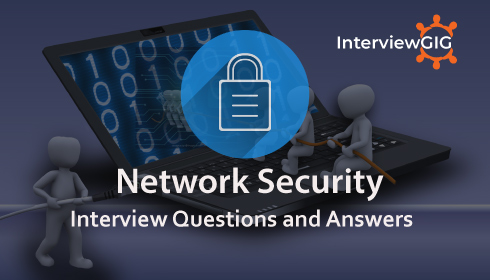
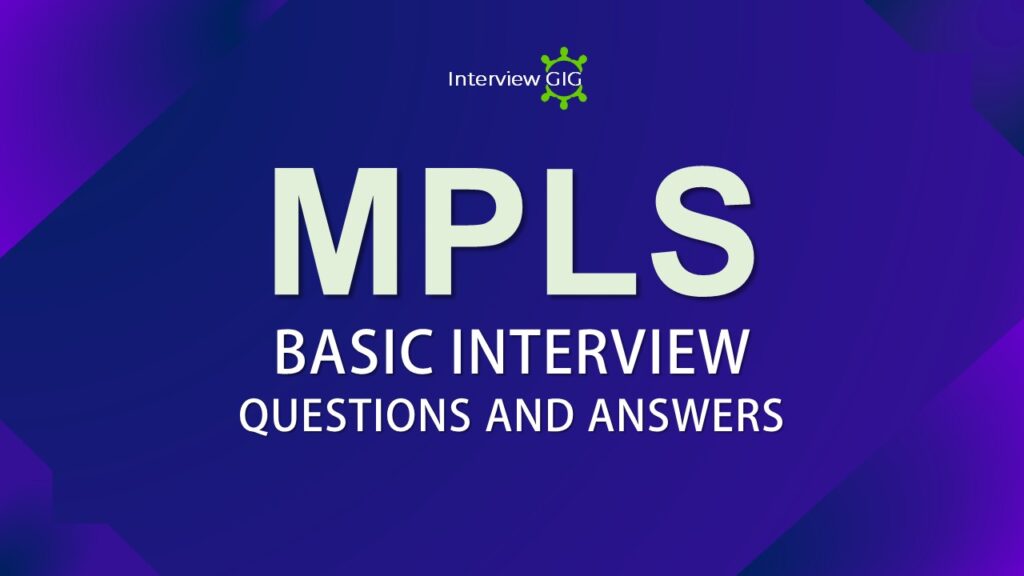
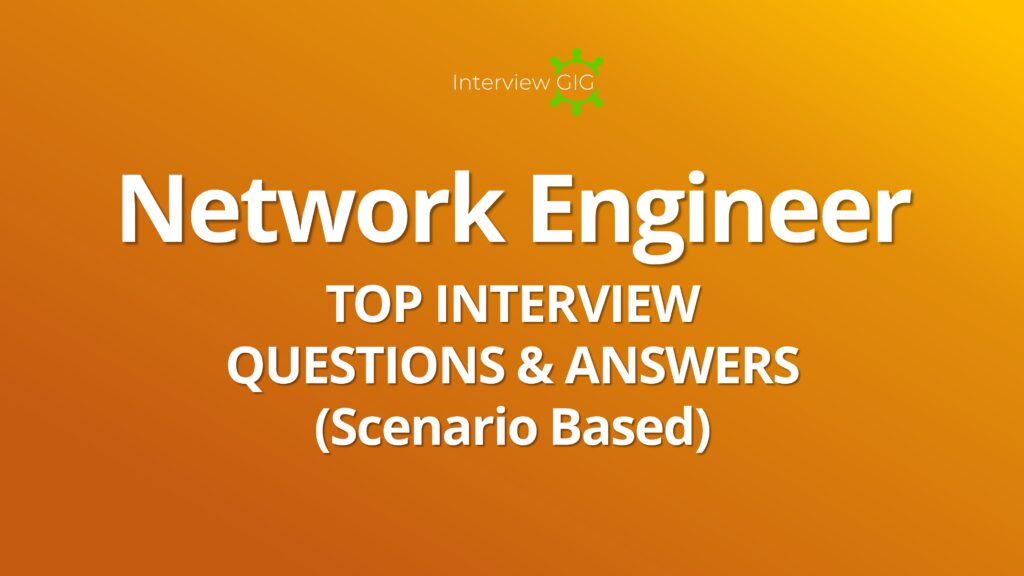
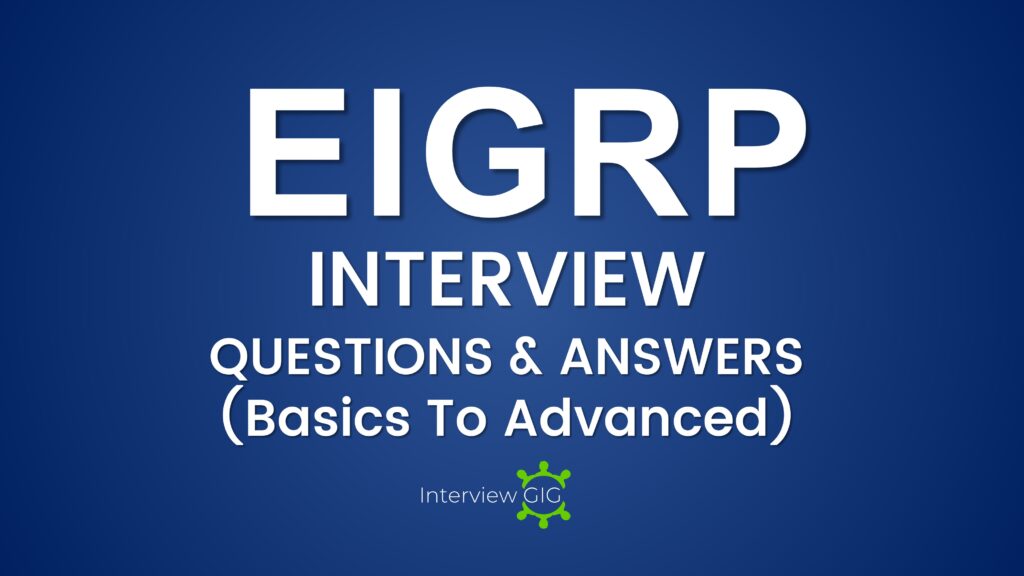
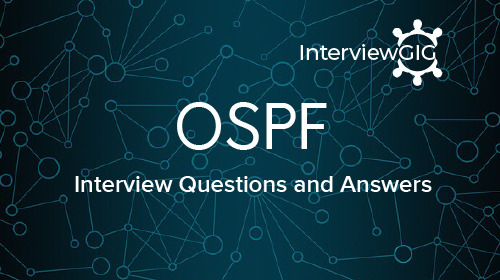
thank you